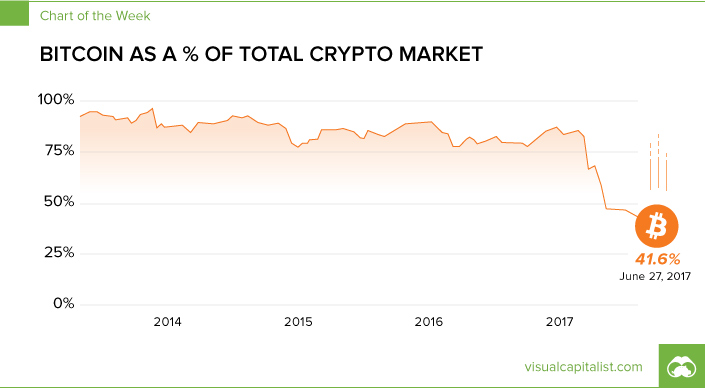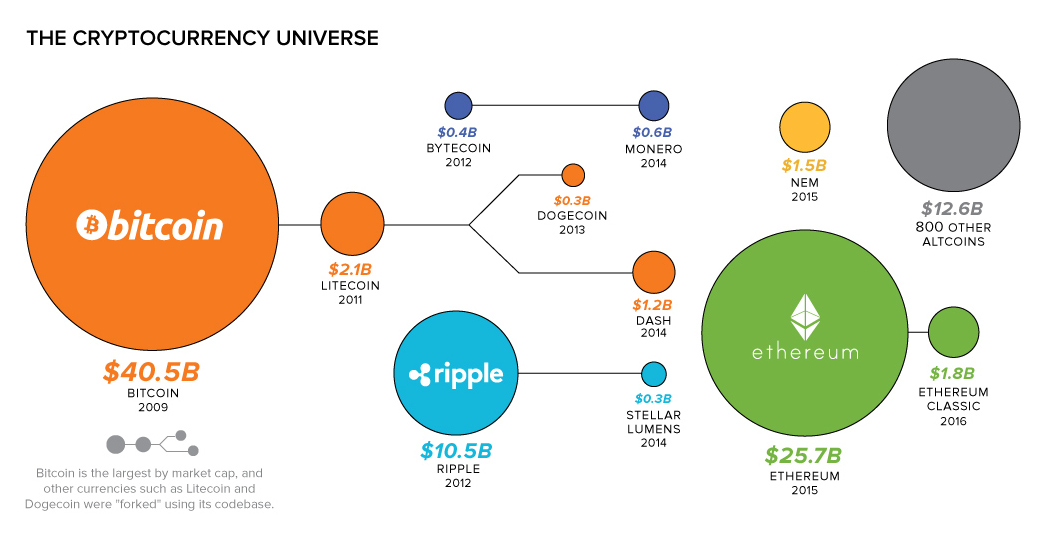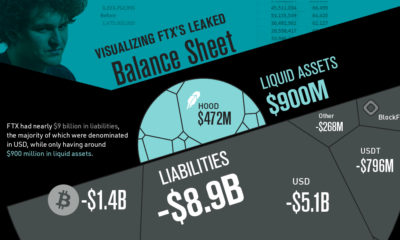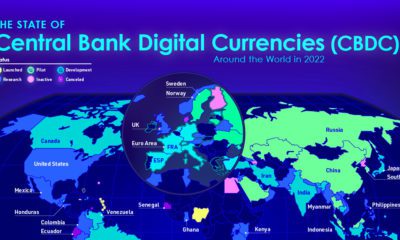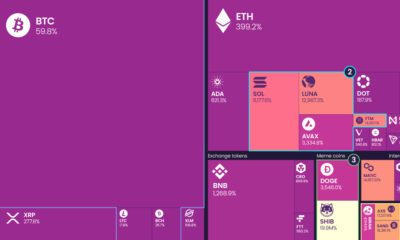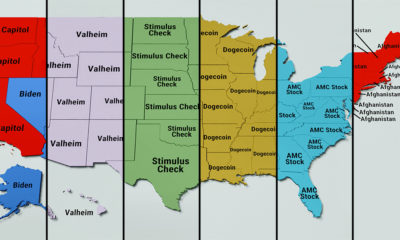Bitcoin is the original cryptocurrency, and its meteoric rise has made it a mainstay of conversation for investors, media, and technologists alike. In fact, the innovation of the blockchain is changing entire markets, while causing ripples with central banks and the financial industry. At time of publication, the bitcoin price now hovers near US$2,400, a massive increase from this time last year. But the true impact of Bitcoin is actually far more reaching than this – it’s actually helped to birth new markets for over 800 other cryptocurrencies and assets that are available for online trading. And while the market for bitcoins is worth $40 billion itself, the rest of these cryptocurrencies are actually worth even more in combination.
The Altcoin Universe
For the first time since Bitcoin was founded, it now makes up the minority of the entire cryptocurrency market at about 41.6% of all coins and assets.
So what are the other altcoins that make up the rest of this universe, and where did they come from? Litecoin Litecoin is one of the first altcoins, and it is nearly identical to Bitcoin after being “forked” in 2011. Litecoin aims to process blocks 4x faster than Bitcoin to speed up transaction confirmation time, though this creates several other challenges as well. At time of writing, Litecoin’s market capitalization is worth $2.1 billion. Ethereum Ethereum, launched in 2015, is the largest coin by market capitalization aside from Bitcoin. However, it is also quite different. While Bitcoin is designed to be a payments protocol first, Ethereum enables developers to build and deploy decentralized applications, while also enabling smart contracts. The tokens used to power the network are called Ether, but they can also be traded online. At time of writing, Ethereum’s market capitalization is $25.7 billion. Also interesting: the Ethereum network actually split into two in 2016. It’s a complicated situation, but read about it here. There is now a separate Ethereum, based on the original Ethereum blockchain, trading as “Ethereum Classic” with its own market capitalization of $1.8 billion. Ripple Ripple (XRP) is the native currency of the Ripple Protocol – a broader catch-all for an open-source, global exchange. It’s already being used by banks such as Santander, Bank of America Merrill Lynch, UBS, and RBC. It solves a different problem than Bitcoin, allowing for settling payments between different currencies and even different payment systems. Today, Ripple’s native coin (XRP) has a market cap of $10.5 billion.
Learn More
With over 800+ altcoins or assets out there, there’s plenty of information to absorb. Here’s a short 20-minute course on the history of altcoins that might provide useful context, as well as in-depth explanations of Ethereum and Ripple that may help you learn about the important parts of a rapidly growing altcoin universe. on But fast forward to the end of last week, and SVB was shuttered by regulators after a panic-induced bank run. So, how exactly did this happen? We dig in below.
Road to a Bank Run
SVB and its customers generally thrived during the low interest rate era, but as rates rose, SVB found itself more exposed to risk than a typical bank. Even so, at the end of 2022, the bank’s balance sheet showed no cause for alarm.
As well, the bank was viewed positively in a number of places. Most Wall Street analyst ratings were overwhelmingly positive on the bank’s stock, and Forbes had just added the bank to its Financial All-Stars list. Outward signs of trouble emerged on Wednesday, March 8th, when SVB surprised investors with news that the bank needed to raise more than $2 billion to shore up its balance sheet. The reaction from prominent venture capitalists was not positive, with Coatue Management, Union Square Ventures, and Peter Thiel’s Founders Fund moving to limit exposure to the 40-year-old bank. The influence of these firms is believed to have added fuel to the fire, and a bank run ensued. Also influencing decision making was the fact that SVB had the highest percentage of uninsured domestic deposits of all big banks. These totaled nearly $152 billion, or about 97% of all deposits. By the end of the day, customers had tried to withdraw $42 billion in deposits.
What Triggered the SVB Collapse?
While the collapse of SVB took place over the course of 44 hours, its roots trace back to the early pandemic years. In 2021, U.S. venture capital-backed companies raised a record $330 billion—double the amount seen in 2020. At the time, interest rates were at rock-bottom levels to help buoy the economy. Matt Levine sums up the situation well: “When interest rates are low everywhere, a dollar in 20 years is about as good as a dollar today, so a startup whose business model is “we will lose money for a decade building artificial intelligence, and then rake in lots of money in the far future” sounds pretty good. When interest rates are higher, a dollar today is better than a dollar tomorrow, so investors want cash flows. When interest rates were low for a long time, and suddenly become high, all the money that was rushing to your customers is suddenly cut off.” Source: Pitchbook Why is this important? During this time, SVB received billions of dollars from these venture-backed clients. In one year alone, their deposits increased 100%. They took these funds and invested them in longer-term bonds. As a result, this created a dangerous trap as the company expected rates would remain low. During this time, SVB invested in bonds at the top of the market. As interest rates rose higher and bond prices declined, SVB started taking major losses on their long-term bond holdings.
Losses Fueling a Liquidity Crunch
When SVB reported its fourth quarter results in early 2023, Moody’s Investor Service, a credit rating agency took notice. In early March, it said that SVB was at high risk for a downgrade due to its significant unrealized losses. In response, SVB looked to sell $2 billion of its investments at a loss to help boost liquidity for its struggling balance sheet. Soon, more hedge funds and venture investors realized SVB could be on thin ice. Depositors withdrew funds in droves, spurring a liquidity squeeze and prompting California regulators and the FDIC to step in and shut down the bank.
What Happens Now?
While much of SVB’s activity was focused on the tech sector, the bank’s shocking collapse has rattled a financial sector that is already on edge.
The four biggest U.S. banks lost a combined $52 billion the day before the SVB collapse. On Friday, other banking stocks saw double-digit drops, including Signature Bank (-23%), First Republic (-15%), and Silvergate Capital (-11%).
Source: Morningstar Direct. *Represents March 9 data, trading halted on March 10.
When the dust settles, it’s hard to predict the ripple effects that will emerge from this dramatic event. For investors, the Secretary of the Treasury Janet Yellen announced confidence in the banking system remaining resilient, noting that regulators have the proper tools in response to the issue.
But others have seen trouble brewing as far back as 2020 (or earlier) when commercial banking assets were skyrocketing and banks were buying bonds when rates were low.
